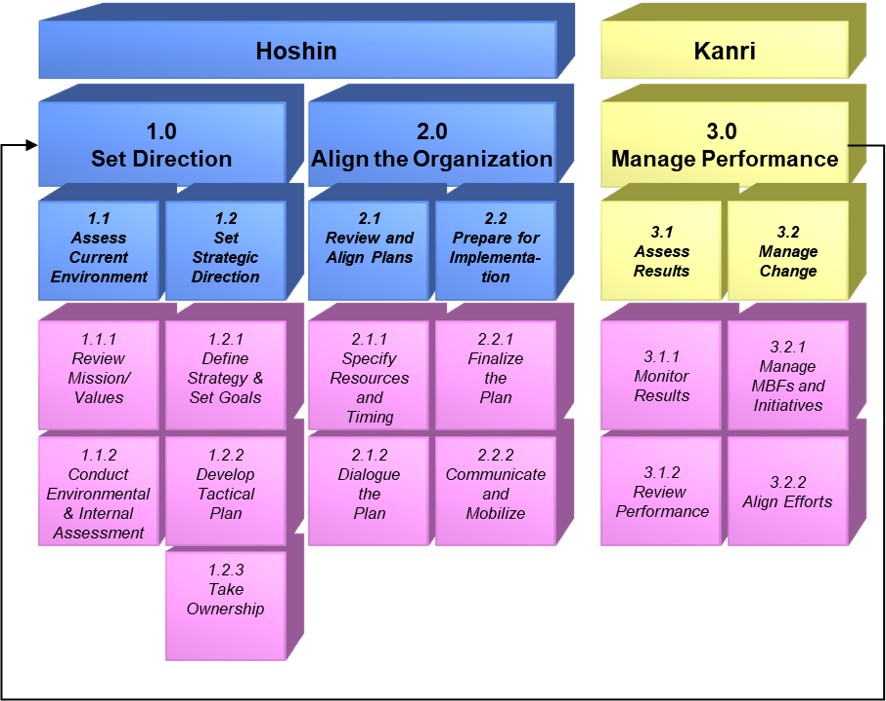
Strategic planning is a formal, organized, proactive and structured process used by an organization to define its vision, goals, and objectives. The process of strategic planning also includes planning for, and the allocation of the resources needed to reach the stated goals and objectives of the organization. It is the roadmap for achieving your organization’s long-term vision of what the organization would look like in the future.
Overview: What is strategic planning?
Strategic planning can be done long term and short term. It can be done strategically, operationally, and tactically. These three levels are done in a cascading manner going from a macro to micro level of detail.
While there are numerous descriptions of the steps used for strategic planning, these seven steps provide a useful guide for your organization to tackle strategic planning.
Step 1: Environmental Scan – A process where your organization identifies and monitors the factors that may impact the long-term direction of your organization.
Step 2: Internal Analysis – This includes a SWOT analysis which assesses the organization’s strengths, weaknesses, opportunities, and threats.
Step 3: Strategic Direction – Based on steps 1 and 2, the organization develops its desired strategic direction.
Step 4: Develop Goals and Objectives – After determining your strategic direction and vision, the organization will create a focused set of goals and objectives. From there, you can come up with strategies, metrics, and desired outcomes for each goal.
Step 5: Define Metrics, Set Timelines, and Track Progress – After you have set the goals and objectives, you will add details to your plan. You will identify the necessary resource allocations, actionable timeframes, and define metrics that will measure success. Milestones and timelines will be developed to ensure you stay on track.
Step 6: Write and Publish a Strategic Plan – Write, publish, and distribute the plan for feedback and to create buy-in to the plan.
Step 7: Plan for Implementation and the Future – You will need to develop and monitor a plan for implementing the strategic plan. This should include performance measures that track progress and create a formal system for frequent review of the plan, and revise goals and objectives as needed.
3 of the benefits of using a strategic planning process are:
1. Helps formulate better strategies using a logical, systematic approach
2. Enhanced communication between employers and employees
3. Empowers individuals working in the organization
An industry example of strategic planning
A large international consumer products company decided to use Hoshin Kanri to develop its strategic plan. They adapted the 7 steps of Hoshin Kanri and consolidated them into three high-level elements. See the graphic below and note how the traditional seven steps of strategic planning are incorporated.

Frequently Asked Questions (FAQ) about strategic planning
Is Hoshin Kanri a form of strategic planning?
Yes. Hoshin Kanri is loosely translated as direction or compass needle and refers to setting direction and alignment of resources. Kanri means control or management. Therefore, Hoshin Kanri helps you set direction and manage your organization’s long-range goals. The term Policy Deployment is also used to describe a strategic planning technique.
What is the typical time frame for a strategic plan?
Strategic plans are typically written for 3-5 years in the future with interim reviews to make revisions as needed.
Should strategic plans be top-down or bottom-up?
It is suggested that strategic plans should cascade down with feedback bubbling up. Since senior leadership has the broadest perspective of the organization and sets the strategic direction, the strategy and its strategic imperatives should be top-down. Operational and tactical plans should link with the strategic plan and serve as the mechanisms by which the strategic plan can be achieved.